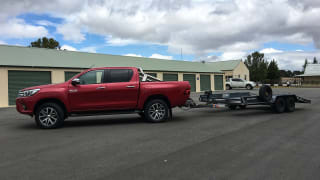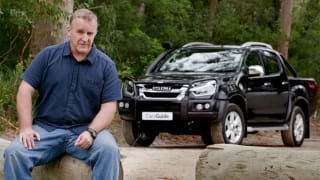The Colorado has an imposing presence with its 3096mm wheelbase, 5361mm length and 1874mm width. It sits 1800mm tall on a robust ladder-type steel chassis with double wishbone coil-spring front suspension and a leaf-spring live rear axle. Steering is rack and pinion with braking via front discs and rear drums. Turning circle is 12.7 metres.
The engineering enhancements evident in the MY17 model are extensive, including revised suspension tuning with new specification tyres, new body-mounting system, electrically-assisted power steering, substantial wind noise reduction and major engine and transmission refinements.

A glaring omission is (still) the absence of steering wheel reach adjustment. Apart from that, driver and front passenger space and comfort is pretty good, although the rather flat and firm front seats still feel like you’re sitting on them rather than in them.
There are no grab handles on the B-pillars to assist rear passengers to climb aboard. Rear seat room in most dual cabs (apart from giant US pick-ups) is usually pretty tight for adults and the Colorado is no exception.

Knee room is adequate, the door pull/armrests are well positioned, and there’s at least 50mm of head room for tall adults. However, the bench seat’s base cushion is a tad short for thigh support and it’s relatively close to the floor, resulting in raised knees and upper thighs which tends to concentrate more body weight on the lower spine. It will carry three rear passengers at a squeeze, but for any trips longer than the local shops we’d recommend keeping it as a four-seater.














